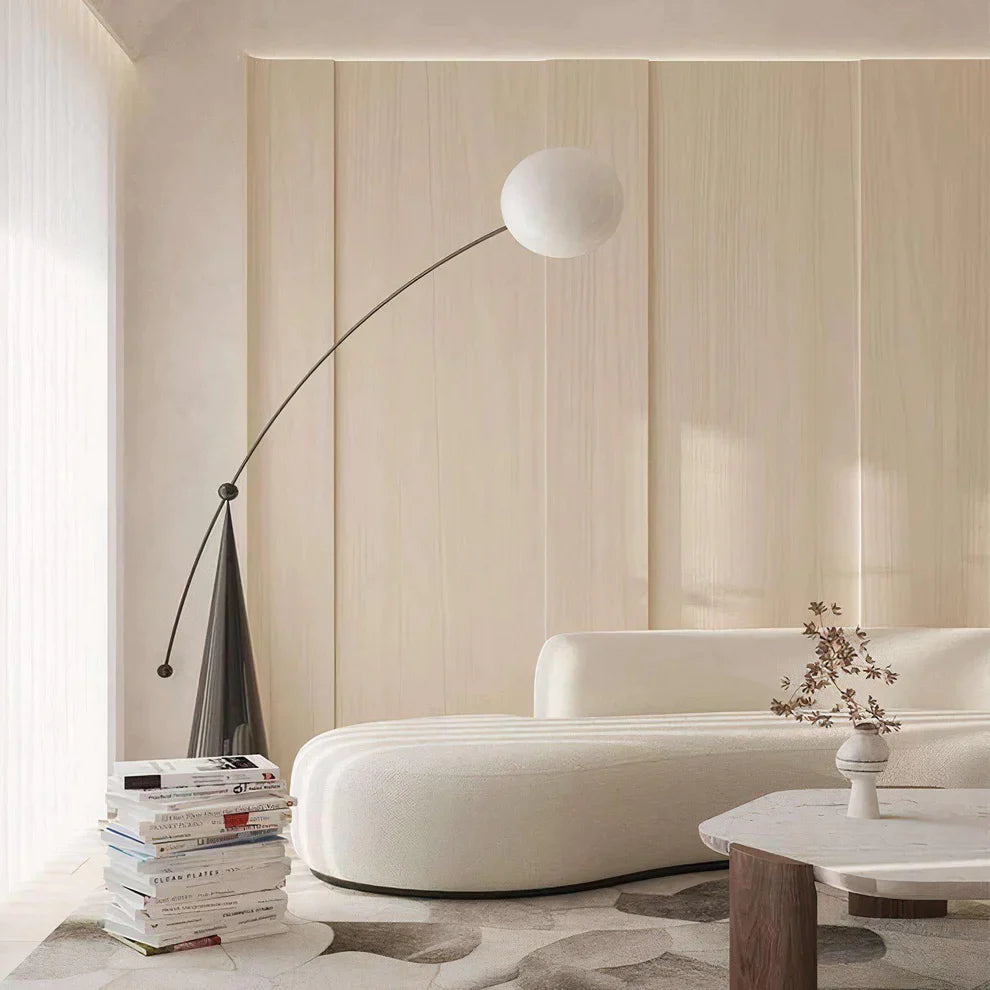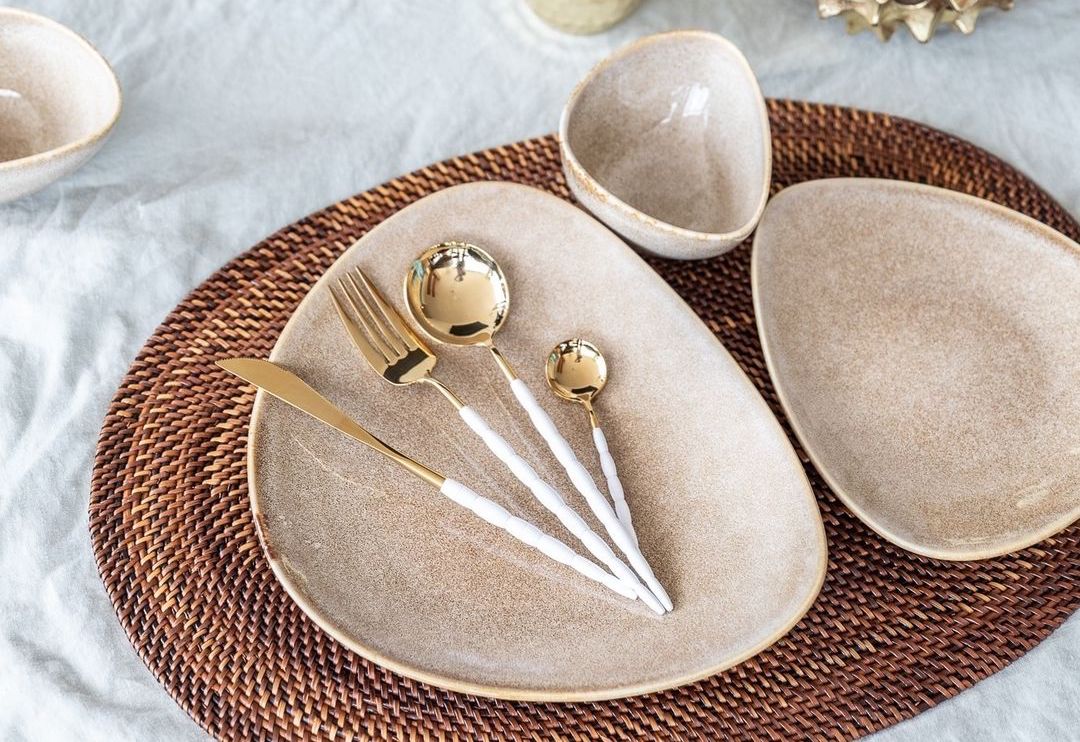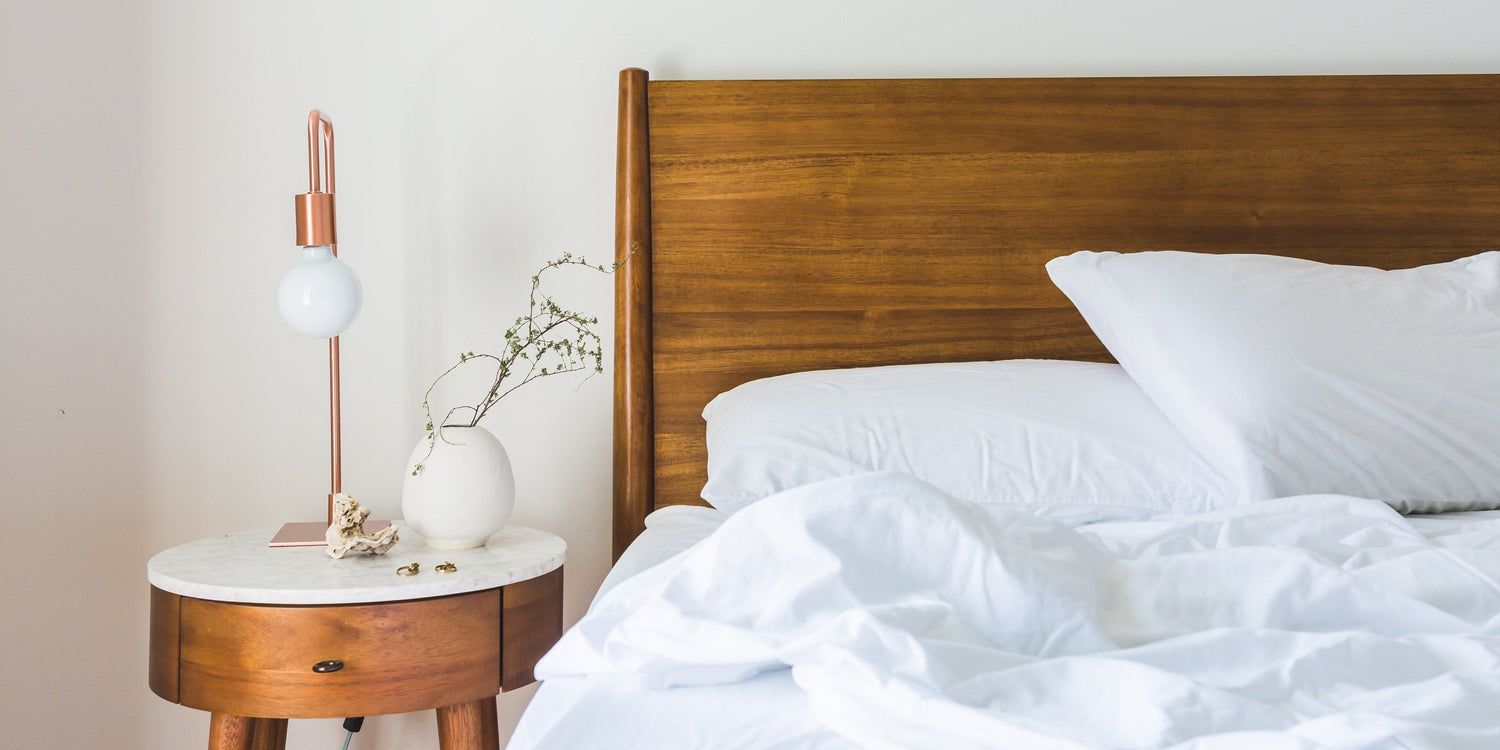Table of Contents
Terrariums are self-contained ecosystems that encapsulate plants within a transparent container, often made of glass. They can come in various forms, from closed ecosystems that maintain humidity to open designs that allow for more variety in plant selection. Their versatility and aesthetic appeal make them a popular choice in contemporary interior design.

Evergreen: an Elegant and Characterful Shade
Evergreen, or vert sapin, is a dark green hue that draws its inspiration from lush coniferous forests. This sophisticated color brings depth and character to interiors, making it an ideal... Keep Reading →
In addition to adding a touch of nature to your home, terrariums offer numerous benefits for decor. They bring life into any space, purifying the air while requiring minimal maintenance. The compact nature of terrariums allows them to fit seamlessly into small spaces, such as shelves, desktops, and windowsills. Their adaptability means they can complement various design styles, from minimalist to bohemian.
The rise in popularity of terrariums can be attributed to the growing trend of biophilic design, which emphasizes the connection between nature and interiors. Homeowners and designers are increasingly seeking ways to incorporate greenery into their spaces. Terrariums meet this need by delivering the organic beauty of plants without overwhelming a room. Their aesthetic qualities make them a staple in modern decor, reflecting the Scandinavian philosophy of simplicity and functionality.
Moreover, terrariums serve as unique conversation pieces, inviting guests to engage with nature even in urban environments. They can be tailored to personal tastes, showcasing creativity and individuality. The act of creating a terrarium can also be a therapeutic experience, allowing individuals to unwind while connecting with nature.
In summary, terrariums are versatile decorative elements that enhance interior spaces while providing numerous benefits. Their growing popularity in contemporary design signifies a broader movement toward natural elements in home decor, making them an essential consideration for anyone looking to elevate their interior aesthetics.

Choosing the Right Container
When it comes to terrariums, the container is just as crucial as the plants within them. A thoughtfully chosen vessel can enhance your decor while providing the necessary environment for your plants to thrive.Types of Terrarium Containers
Terrarium containers come in various forms, primarily made of glass. The most common types include open and closed designs. Open terrariums offer good air circulation, making them suitable for succulents and air plants that thrive in drier conditions. Closed terrariums create a mini-ecosystem, which retains moisture and humidity, ideal for ferns and mosses. Consider also the shape of the container. Round, square, and geometric shapes each offer a unique aesthetic. A globe-shaped terrarium adds a soft touch, while angular containers can bring a modern flair to your space.Factors to Consider: Size, Shape, and Style
Sizing is fundamental. The size of your terrarium should complement your available space; a small container can pique interest on a bookshelf, while a large statement piece could take center stage on a coffee table. Shape matters, as well. A tall, narrow container can lend a contemporary elegance, while a low, wide bowl can create an inviting, relaxed atmosphere. Select a style that reflects your overall decor—modern, rustic, or something in between. A clear glass vessel works seamlessly with most styles, but don't shy away from colored or textured containers if they align with your vision.Tips for Finding the Perfect Terrarium Container for Your Space
Finding the ideal terrarium container requires considering both aesthetics and practicality. Start by assessing your current decor and noting the color schemes and materials you already have. Look for containers that feature thoughtful design elements—these could be unique textures, intricate lids, or even built-in drainage options. Online marketplaces, artisan craft fairs, and local home goods stores are excellent places to discover unique pieces. Ultimately, choose a container that resonates with you personally. It's more than just a vessel; it's an extension of your style and a conversation starter in your home. Always keep in mind the functionality of the container as well. If you are a novice to plant care or prefer low-maintenance options, an open terrarium may be the best choice. Conversely, if you wish to create a self-sustaining environment, a closed container will suit your needs better. With these considerations in mind, you're well on your way to selecting a terrarium container that not only enhances your decor but also provides the perfect home for your chosen plants.
Selecting Suitable Plants
Choosing the right plants is fundamental to creating a thriving terrarium. Opt for species that complement each other and suit the terrarium's environment.Best Plants for Terrariums
Succulents are a popular choice for terrariums due to their low maintenance and diverse shapes. Varieties like Echeveria or Haworthia are ideal for arid, open designs. If you prefer a closed terrarium, consider ferns, which enjoy humidity. Neoregalia bromeliads also thrive in moist environments, adding vibrant color and unique textures. Air plants (Tillandsia) are perfect for a modern, minimalist touch. They don't require soil and can be displayed creatively, suspended from driftwood or nestled in decorative gravel. For a botanical enclave, incorporate small tropical plants such as pebbly stonecrop or baby tears, both of which add lush foliage.Care Requirements for Different Plant Types
Each plant comes with distinct care needs. Succulents require bright, indirect sunlight and minimal water. An occasional misting is adequate, as excessive moisture can lead to rot. Ferns, on the other hand, thrive in consistently humid conditions. They prefer indirect light and should be watered more frequently to maintain moisture. Air plants need good air circulation and should be soaked in water for about 20 minutes every week, then allowed to dry completely before returning them to the terrarium. Understanding these requirements helps ensure your plants flourish.How to Mix and Match Plants for Visual Appeal
Creating a diverse terrarium involves selecting plants with varying heights, textures, and colors. For instance, pairing tall, spiky succulents with lush, low-growing moss or creeping ferns creates depth. When mixing plants, consider their growth patterns; ensure taller plants don’t overshadow shorter ones. Use a color palette to guide your selections. Combining plants with complementary colors or varied shades of green adds visual interest without overwhelming the design. Arrange plants in groups of odd numbers, which often appears more organic and harmonious, enhancing aesthetic balance within the terrarium. To achieve a cohesive look, consider the terrarium’s overall theme—whether it's tropical, desert, or woodland-inspired. Uniformity in the chosen plant types helps maintain this concept and ensures a pleasing presentation.Sourcing Plants and Establishing Themed Terrariums
When sourcing plants, visit local nurseries for fresh options and expert guidance. Online stores can also offer unique varieties, but check reviews for quality. Establish a theme aligning with your home decor for cohesion—think minimalist, bohemian, or industrial. Tropical terrariums benefit from vibrant greens and colorful foliage, while desert-themed setups should include cacti and sandy substrates. Create a cohesive composition by ensuring the plants embody the chosen aesthetic, enhancing both the terrarium and your living space. Adjust your plant selections seasonally to keep the terrarium dynamic. Refreshing with seasonal blooms or varied foliage not only provides ongoing interest but also reflects the changes in nature throughout the year. With mindful selection and arrangement, your terrarium can transform into a stunning focal point, harmonizing with your modern, Scandinavian-inspired decor.
Designing your terrarium is a blend of art and science, where nature meets creativity. Begin with the foundation—layering is key. Start with a base of small rocks or pebbles for drainage. This will prevent water from accumulating at the bottom, which is crucial for the health of your plants. A layer of activated charcoal follows, which helps to filter water and keep the environment fresh.
Next, add a thick layer of potting soil, ensuring it is appropriate for the plant varieties you’ve chosen. For example, a gritty soil mix works well for succulents, while a moisture-retaining mix benefits ferns and mosses. Aim for depth that allows enough space for plant roots without overwhelming their growth.
Once the soil is in place, it's time to select and arrange your plants. Begin with larger specimens as the focal point and work your way to smaller plants around them. This tiered layering will create depth and dimension. Cluster plants for a more natural look, keeping in mind their growth habits and light requirements. It’s important to ensure each plant has enough room to grow without overcrowding.
For creative design elements, consider adding decorative touches that reflect your style. Natural elements such as driftwood or stone can enhance the aesthetic. Incorporating figurines or small sculptures makes your terrarium a unique piece of decor. Ensure these elements don't overshadow the plants but rather complement them. Balance is essential; too many accessories can clutter the visual space.
Utilize color to your advantage. Select plants with varying shades of green along with splashes of color from flowers or foliage. Responsible placement of colored stones can also introduce vibrancy and unity. A monochromatic scheme with various greens can evoke tranquility, while a mix of bright colors can exude energy and joy.
Texture plays a critical role in a terrarium’s design. Combine different plant textures to create visual interest. For example, a soft moss can contrast beautifully with the sharpness of succulent leaves. Similarly, rough stones juxtaposed with smooth glass containers can enhance the overall narrative of the design. Don’t hesitate to experiment—artful chaos can yield stunning results.
Light is another vital consideration. Ensure your design accommodates the light needs of the plants you incorporate. Position your terrarium in a spot that receives indirect sunlight or use supplemental grow lights if necessary. Proper lighting not only assists in plant growth but also accentuates design elements within the terrarium.
As you finalize the design, avoid over-watering during initial setup as excess moisture can be detrimental. Mist your plants lightly and observe how they respond. Once established, your terrarium will thrive with minimal care, allowing you to enjoy the beauty of nature encapsulated in your chosen display.
In essence, designing a terrarium is about creating a mini-ecosystem that reflects personal taste. Play with layers, textures, and colors to fashion a stunning visual narrative. Your terrarium will not only be a testament to your creative flair but also a breath of fresh air, bringing the serene essence of nature indoors.

Caring for terrariums is crucial to ensure they thrive and enhance your decor for years to come. Understanding the specific needs of your plants and the environment inside the container will help maintain their beauty.
Start with the basics: light conditions. Most terrariums need indirect sunlight to flourish. Direct sunlight can lead to overheating and moisture loss, while too little light can stifle growth. Position your terrarium in a spot that receives bright, filtered light for several hours a day.
Watering is perhaps the most critical aspect of terrarium care. Closed terrariums maintain moisture better than open ones, so they require less frequent watering. For closed systems, check the moisture level by observing the condensation on the glass. If it's foggy, defer watering; if droplets haven’t formed, it’s time for a light misting. Open terrariums should be watered more often, about once a week, depending on the humidity and temperature of your home.
Overwatering is a common issue. Ensure proper drainage by using activated charcoal and pebbles in your terrarium base. If you notice signs of mold or mildew, adjust your watering schedule and provide better air circulation. The presence of fungus indicates that you are likely watering too often or that the plants are not getting enough light.
A manageable approach to pruning can keep your plants lively. Regularly trim any dead or overgrown leaves to allow light to reach the lower parts of the plants and improve air circulation. This not only keeps the plants healthy but also maintains a polished appearance in your design.
Occasionally, terrariums may need repotting or redesigning. As plants grow, they might outgrow their confined space. If you notice congestion or roots beginning to push against the sides of the glass, it’s time to refresh your terrarium. You can gently remove the plants, replace soil, and create new arrangements to provide both renewed aesthetics and health.
Keep an eye out for pests. While terrarium environments are generally protective, they are not immune to infestations. Check the surface of your plants for discoloration or webbing which could indicate a problem. A diluted solution of insecticidal soap can help in controlling minor pests without harming your plants.
Seasonal changes can also affect your terrarium's environment. In winter, indoor heating can dry out the air, requiring increased humidity or occasional misting for optimal care. Conversely, during the summer, you may need to reposition your terrarium to prevent overheating. Adapt your care as seasons shift to keep your plants thriving.
Every so often, take a step back and evaluate the overall look of your terrarium. If it appears crowded or lacks vitality, consider refreshing the arrangement. This can involve simply removing some plants or adding new elements to enhance its visual interest. Creating a seasonal theme with small decorations can renew your terrarium’s ambiance and keep it fresh.
With the right care, terrariums not only beautify your space but can also become a gratifying hobby. Observe your plants' growth and make adjustments as necessary to foster a lasting and elegant terrarium centerpiece that resonates with contemporary Scandinavian aesthetics.
Incorporating terrariums into your home decor not only enhances the aesthetic appeal of a space but also brings a touch of nature indoors. Their versatility allows for personalization, making them a prominent feature in modern interior design. By carefully selecting the right container, choosing suitable plants, and applying thoughtful design principles, you can create stunning displays that serve as living art pieces. Regular care and maintenance are key to preserving the beauty of your terrarium. Understanding the specific needs of your plants and being proactive about potential issues will prolong their life and vibrancy. As trends evolve, don't hesitate to refresh your terrarium, experimenting with new arrangements or plants to keep your decor dynamic. Ultimately, terrariums can elevate your home, offering a serene escape that bridges the gap between nature and refined living. Embrace the process of designing and maintaining them; it’s not just about decoration, but also about fostering a serene atmosphere that resonates with the Scandinavian ethos of simplicity and harmony.






